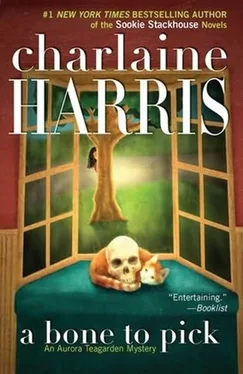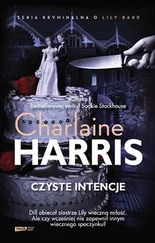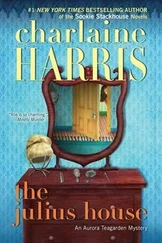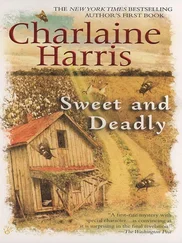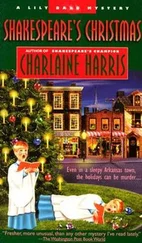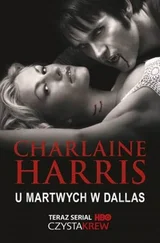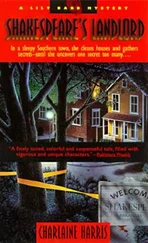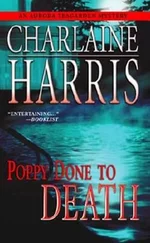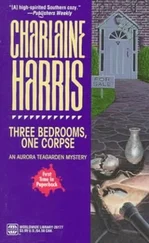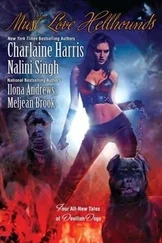But Jane Engle had always been a Madeleine Smith buff. Madeleine had been released after her trial after receiving the Scottish verdict “Not Proven,” wonderfully accurate. She had almost certainly poisoned her perfidious former lover, a clerk, so she could marry into her own respectable upper-middle-class milieu without the clerk’s revealing their physical intimacy. Poison was a curiously secret kind of revenge; the hapless L’Angelier had deceived himself that he was dealing with an average girl of the time, though the ardency of her physical expressions of love should have proved to him that Madeleine had a deep vein of passion. That passion extended to keeping her name clean and her reputation intact. L’Angelier threatened to send Madeleine’s explicit love letters to her father.
Madeleine pretended to effect a reconciliation, then slipped arsenic into L’Angelier’s cup of chocolate.
For lack of anything better to do, I pulled out one of the Smith books and began to flip through it. It fell open right away. There was a yellow Post-it note stuck to the top of the page.
It said, in Jane’s handwriting, I didn’t do it.
I DIDN’T DO IT.
The first thing I felt was overwhelming relief. Jane, who had left me so much, had not left me holding the bag, so to speak, on a murder she herself had committed.
She had left me in the position of concealing the murder someone else had committed, a murder Jane also had concealed, for reasons I could not fathom.
I had believed the only question I had to answer was Whose skull? Now I had also to find out who put the hole in that skull.
Was my situation really any better? No, I decided after some consideration. My conscience weighed perhaps an ounce less. The question of going to the police took on a different slant now that I would not be accusing Jane of murder by taking in the skull. But she’d had something to do with it. Oh, what a mess!
Not for the first (or the last) time, I wished I could have five minutes’ conversation with Jane Engle, my benefactress and my burden. I tried to think of the money, to cheer myself up; I reminded myself that the will was a little closer to probate now, I’d be able to actually spend some without consulting Bubba Sewell beforehand.
And to tell you the truth, I still felt excellent about that money. I had read so many mysteries in which the private detective had sent back his retainer check because the payer was immoral or the job he was hired to do turned out to be against his code of honor. Jane wanted me to have that money to have fun with, and she wanted me to remember her. Well, here I was remembering every single day, by golly, and I certainly intended to have fun. In the meantime, I had a problem to solve.
It seemed to me that Bubba knew something about this. Could I retain him as my lawyer and ask him what to do? Wouldn’t attorney-client privilege cover my admission I’d located and rehidden the skull? Or would Bubba, as an officer of the court, be obliged to disclose my little lapse? I’d read a lot of mysteries that had probably contained this information, but now they all ran together in my head. The laws probably varied from state to state, too.
I could tell Aubrey, surely? Would he be obligated to tell the police? Would he have any practical advice to offer? I was pretty confident I knew what his moral advice would be; the skull should go into the police station now, today, pronto. I was concealing the death of someone who had been dead and missing for over three years, at a minimum. Someone, somewhere, needed to know this person had died. What if this was Macon Turner’s son? Macon had been wanting to know the whereabouts of his son for a long time, had been searching for him; if there was even a faint chance his son’s letters to him had been forged, it was inhumane to keep this knowledge from Macon.
Unless Macon had caused the hole in the skull.
Carey Osland had believed all these years her husband had walked out on her. She should know he had been prevented from returning home with those diapers.
Unless Carey herself had prevented him.
Marcia and Torrance Rideout needed to know their tenant had not voluntarily skipped out on his rent.
Unless they themselves had canceled his lease.
I jumped to my feet and went into the kitchen to fix myself-something. Anything. Of course, all that was there was canned stuff and unopened packages. I ended up with a jar of peanut butter and a spoon. I stuck the spoon in the jar and stood at the counter licking the peanut butter off.
Murderers needed to be exposed, truth needed to see the light of day. Et cetera. Then I had another thought: whoever had broken into this house, searching for the skull, had been the murderer.
I shivered. Not nice to think.
And even now, that little thought trickled onward, that murderer was wondering if I’d found the skull yet, what I’d do with it.
“This is bad,” I muttered. “Really, really bad.”
That was constructive thinking.
Start at ground zero.
Okay. Jane had seen a murder, or maybe someone burying a body. For her to get the skull, she had to know the body was there, right? Jane literally knew where the bodies were buried. I actually caught myself smiling at my little joke.
Why would she not tell the police immediately?
No answer.
Why would she take the skull?
No answer.
Why would anyone pick Jane’s demise as the time to look for the skull, when she’d obviously had it for years?
Possible answer: the murderer did not know for sure that Jane was the person who had the skull.
I imagined someone who had committed a terrible crime in the throes of who knew what passion or pressure. After hiding the body somewhere, suddenly this murderer finds that the skull is gone, the skull with its telltale hole, the skull with its identifiable teeth. Someone has taken the trouble to dig it up and take it away and the killer doesn’t know who.
How horrible. I could almost pity the murderer. What fear, what terror, what dreadful uncertainty.
I shook myself. I should be feeling sorry for The Skull, as I thought of it.
Where could Jane have seen a murder?
Her own backyard. She had had to know where the body was buried exactly; she had had to have leisure to dig without interruption or discovery, presumably; she could not have carted a skull any distance. My reasoning of a few days before was still valid, whether or not Jane was the murderer. The murder had happened on this street, in one of, these houses, somewhere where Jane could see it.
So I went out in the backyard and looked.
I found myself staring at the two cement benches flanking the birdbath. Jane had been fond of sitting there in the evenings, I recalled her saying. Sometimes the birds had perched on the bath while she sat there, she could sit so still, she had told me proudly. I did wonder if Madeleine had been outside with Jane enjoying this, and dismissed the thought as unworthy. Jane had been many things- I seemed to be finding more and more things she’d been every day-but she hadn’t been an out-and-out sadist.
I sat on one of the cement benches with my back to Carey Osland’s house. I could see almost all the Rideouts’ sun deck clearly, of course: no Marcia in red there today. I could see their old garden plot and some clear lawn. The very rear of their yard was obscured by the bushes in my own yard. Beyond the Rideouts’ I could discern one little section of Macon Turner’s, which had lots of large bushes and rather high grass. I would have to come out here at night, I thought, to find if I could see through the windows of any of these houses.
It was hot, and I was full of roast beef and peanut butter. I slid into a trance, mentally moving people around their backyards, in various murderous postures.
Читать дальше
